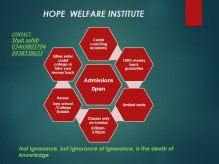Location;Swabi Lies between the Indus River and Kabul River, in the North-West Frontier Province of Pakistan. Its residents are referred to as ‘Swabva’l.’ It is the fourth most populous district of the province. The Mandanr Yusufzai subsection of the Yousafzai clan of the Pukhtoons form a majority of the districts population.STATISTIC;Disrtict Name : Swabi
Area : 1,543 km2 (595.8 sq mi)
Populations : 1,826,804 ( 2005 A,D)
Number of Tehsils : 4 ( Swabi, Lahor, Topi and Razar )
Number of Union Councils : 56
Main Clans:: Yousafzai are in majority. Others include Razars/Rajars, Utman, Jadoon/Gadoon and Khattak.Religion:: Muslims 99.6 per cent, Ahmadi 0.3 per cent and Christian 0.1 per centMain Languages:: Pushto 96.4 per cent; Others 3.6 per cent.Literacy Rate:: 70 per cent (High ratio in all districts of Pakistan).Economically Active Population:: 25 percent of the total population.Main Occupations:: Professionals 24.3 per cent; Technicians 3.2 per cent; Clerks 2.6 per cent; Service and shop workers 8.6 per cent; Agriculture workers 52.6 per cent; Craft and related trade workers 3.2 per cent; Plant and machine operators 3.7 per cent; Elementary occupations 21 per cent, Armed forces 30.7 per cent.Overview;Tobacco is a cash crop of Swabi, along with vegetables, wheat, sugar cane and maize. Its climate is well suited for citrus in particular, but many other fruits like watermelon, peaches and apricots are also grown there.It also boasts one of the most prestigious institutions of Pakistan, the Ghulam Ishaq Khan Institute of Engineering Sciences and Technology located in village Topi.A six lane motorway connecting Islamabad with Peshawar passes through Swabi District with an access interchange at Village Ambaar. Swabi, also commonly known as the “land of Yousafzai Eagles”, has produced a number of great personalities, which has influenced various aspects of Pakistan, like Politics, Literature, Sports, Defence, Education and much more. Great Pakistanis, like Captain Kernal Sher Khan Shaheed (Nishan e Haider) who got matyrdom during “Kargil War” borned here. Similarly Sir Sahibzada Abdul Qayum Khan (the founder of Islamia College Peshawer) Maulana Muhammad Ali Johar (the founder of Caliphate Movement in British India) V.P. Singh (the seventh Prime Minister of India) Abdul Qadir (former test cricketer and Gogli Boweler) and Moin Akhtar (great comedian and Compere) were the prominent Pakistanis borned at Swabi.Administration
As well as being district capital, Swabi serves as tehsil headquarters of Swabi Tehsil which contains 39 Union Councils[1]. Moreover, the most famous Tarbela Dam is also in Swabi (near Topi town) and Ghulam Ishaq Khan Institute of Engineering Sciences and Technology, which is famous for its quality of education is also located in Swabi District (in Topi Town). Swabi is the Home Land & the Last Resting Place (Tomb) of the Ever First Sole Organized Ruler & Statesman of the Ever First Sole Organised Vast State of the Mandanr Yusufzais i.e. Mr. Gaju Khan. Captain Kernal sher khan shaheed (Nishan-e-Haider) also belongs to sawabi. His tomb is in Nwan killi(Now kernal sher killi). The Govt has established a college in the name of Captain sher in Distt Swabi (Ismaila). Rani Gatt Buddhist historical sites are also situated in Swabi, which is under conservation by the Shewa Educated Social Workers Association.Demography
Today almost the whole population is Pakhtun of the Yusufzai tribe, there are also Utmanzai and Tanoli present in district, however even today Hindus and Sikhs live in some areas of Swabi.Tourism
Swabi is famous for Yusuf Khan and Sherbano, a famous folk Pashtun love story. Visitors come to the village of Shera Ghund and climb the mountain located in the town of Kalu Khan at the Mountain Karamar to visit the tomb of Yousaf Khan. Gadoon Amazai is one of the most popular places for tourists, especially the village of Mangal Chai.Kund park, which lies on the banks of the rivers Indus and Kabal, is located in town of Tordher. Tordher is the second leading trading city after Swabi in the district. It has a population of nearly 50,000 people. There are 18 primary schools and three high schools. Another tourist area is Ghazi-Bharota Dam, which is near Topi and Tarbela Dam. Mahaban Hill in Gadoon has a scenic beauty, like Swat and other hilly areas. Pir Galai resort is here, 6,000 feet (1,800 m) above sea level. From here one can see Mansehra, Buner and Kaghan hills.Afghan refugee camp
The Afghan Refugee camp was established more than 20 years ago when the Soviet Union invaded Afghanistan and five million Afghanis fled to Pakistan for shelter. This was the biggest camp in the country. Most of the refugees speaking the same language and culture had little problem settling down. But the huge flow of arms (confiscated from Soviet soldiers during the war), together with the rise in drug smuggling from Afghanistan and theft had become great challenges for the local population. The local people wished to have peace in Afghanistan so that refugees could leave as soon as possible. This camp is also called Maneri Camp.
Streams and rivers
Swabi is home of dozens of streams and two great rivers, the Indus and the Kabul. Both the rivers meet at a place called Kund, a major tourist attraction. The Indus river with its spectacular blue colour and the Kabul river’s muddy brown waters go side by side without blending. Also there are several small streams in different locations of Swabi. A unique stream is in village Maini. The water of the stream comes out in the centre of the village. Its water is used for irrigation in the village. This stream is called china in local language which means spring. The three villages namely Kotha, Topi and Maini are collectively called Utman. They all have natural springs called china in Maini, chino in Kotha and bayin in Topi.Famous Villages of District Swabi
District Swabi consists of many villages with an average no.’s of 82. The most important of them are, Yarhussain, Dagi, Dandoka, Topi, Marghuz, Zaida, kunda, Qillabat, Zarobi, Terbela, Ismaila, Adeena, Kalukhan, Kernal SherKhan killi, Maneri, Swabi, Chota Lahore, Sudher, Yaqoobi, Turlandi,Tarakay, Naranji, Parmooli, Menai, Tandkhoi, Gadoon(including a number of villages), Amazai, Jehangira, Tordher, Dobiaan, Anbaar, Panjpir, Baja, Baamkhel, Jalbai, Jalsai, Chaknooda, Sheikhjana, etc.
Swabi District(Pashto: صوابی,Urdu: صوابی)
Categories: Uncategorized
12 Comments







Our family is from topi,mohallah ishamiel khel, my family inherited 1100 years old history of Pathans, and specially this area,which had 65volumes sadly most of it was vandalized in 1947, personally I know more about the history of utmaan.
plz tell little bit about kalabat village”history if u know
sure i vl try my best thanx
I studied completely about tanolis . And now my comments are .tanolis are more bravely from yousufzai . They are honest, brave, and complete muslims .plz all tanolis are react brotherly with each other . help & support the other tanoli brothers . Thanx . naveed tanoli frm managi
lolz we looking half muslims to you?
ok
i need full history of kalu khan, if someone know about history of kalu khan then send me plz at my email munnabai6547@yahoo.com
like us facebook
https://www.facebook.com/na12swabi
Village Shewa is the Second big village of District Swabi after Yar Hussain and the Owner of mountain of Kar Mar.which you have not mention.
say something about tarakai plx
try to include some information about tarakai please
Razzar aur yousafzai may kya farq hai tum tu history hi ghalat likh rahay ho